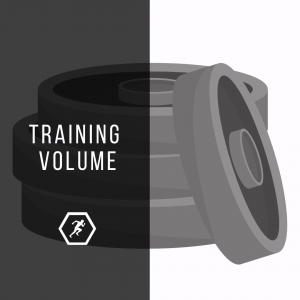
One of the biggest topics of confusion I see from novice to even advanced lifters/athletes is training volume.
Training volume being the total amount of workload being done. In relation to weight training, this is generally referring to the total amount of working sets being performed per session or per week.
The amount of training volume you do is generally decided by your training goal, however, these are just guidelines.
What is commonly forgotten with training volume, is that deciding the correct amount of volume is dependant on a range of different factors.
Mind Muscle Connection
A term that’s commonly used in the bodybuilding sphere but has application elsewhere also. Generally defined as being able to create more activation from the muscle that is being worked.
Having a greater mind muscle connection means that every set creates more muscle activation and therefore greater muscle fibre recruitment. If someone can create a greater mind muscle connection, then in theory, they will get more out of less sets, meaning less overall volume needed.
Time under tension
Another phrase commonly used in bodybuilding and hypertrophy style training, referring to the amount of time a muscle is placed under tension.
The longer a muscle is kept under tension during an exercise, the more fatigue, muscle fibre recruitment and muscle damage there will be. This can lead to a potentially greater physiological adaption (more muscle growth and strength).
Therefore, a single, 60 second set is probably quite comparable to a 3 x 20 second sets, due to a similar time under tension time (given intensity was matched).
Training Intensity
There are many low volume training styles being preached, with Mike Mentzer’s form of HIT/Heavy duty training being one of the first in the weight training sphere.
It doesn’t take much to see that this style of training got results then and still gets results now. What is commonly forgotten however, is the training intensity required to get there. Many physically and psychologically cannot reach the level of intensity required to justify doing a low volume routine.
This is especially the case for novice athletes and gym goers who are yet to have to go through the necessary neural adaptations to perform strength training movements optimally.
This would be a good example of were more volume with a greater amount of sets and reps would produce more benefit.
Recovery Capabilities
Potentially the most important factor in deciding your training volume per session and per week and a difficult one to balance even for advanced athletes and gym goers.
That being, one of managing and learning how much you can personally recover from. For athletes or anyone with a physical job, this can be very important.
Put too many sets in your session and you’ll know about it for the next few days, with the worst case scenario being a training session, game or any physical work requirements in the days following (resulting in a poor performance and a higher risk of injury).
One of my favourite sayings with clients is that “it’s not about how much you can do in your session, its about how much you can RECOVER from”.
Time
How much time do you actually have time to train?
Because if you’re like me, having time to train is becoming more and more sparse (although I still make it a priority).
If you have the capability to produce 2 intense working sets on as opposed to 4 on all your exercises, why not? You may shave a good chunk of time off your training time.
Pacing
Pacing is a topic that has been heavily researched, in particular in endurance events. With the premise of this research being the more you have to come in whatever you are doing, the more you may hold back. This may even happen without you knowing it.
A situation I’ve personally found myself in, with 3-4 sets per exercise resulting in me holding back on my first couple of sets to preserve energy to sustain decent numbers across the 3-4 sets.
Having a good understanding of your goal and your current situation means you can create a good idea of how little you can get away with to reach that goal is a good place to start.
Not all of these factors will apply to you, with there being differences with every individual in regard to developing a training schedule.
However, they are definitely worth thinking about when writing, purchasing or working with someone in designing a training programme.
If you need help with your training apply for a free consultation here: http://bit.ly/TheSandCPT
Or message me directly.